Zagreb Grič Cannon: Explosive Noon Reminder
July 9, 2021 - Zagreb Grič Cannon - a reminder of noon, and a reason to avoid the centre if you aren't a fan of loud sounds. Get your noise-canceling headphones and read about the cannon's history, courtesy of TCN reporter Ivor Kruljac.
If you find yourself walking around a wider Zagreb centre (such as Savska Cesta or Marin Držić Avenue) around noon, and you focus on the sounds of the city, you may notice a weird sound in between traffic and people passing. An unusual sound, as if someone dropped a heavy box. But, if around noon, you find yourself at Ban Jelačić square or upper town, you will hear a clear and loud BANG! Fear not, as this is not a terrorist attack, and you weren't lied to when your tourist agency swore to god Zagreb is safe from such horrors. The heart-stopping bang is a signifier of noon. If you hear a boom at 11:59 or 12:01, your watch is behind a minute. The cannon states that clear and very, very loud.
Loudest time checker you could think of
Grič cannon first started signaling noon on January 1, 1877, and was located at the State's Meteorology department, back in times when Croatia was part of the Austrian-Hungarian Monarchy. It wasn't until 1927 that it was moved to Fort Lotršćak where it is situated today.
According to the Klovićevi Dvori Gallery's official website, Fort Lotrščak was named after a bell and comes from campana latrunculorum, which is Latin for „Bell of Thieves“ that rang before closing city gates. Historians aren't exactly sure what the Fort looked like in medieval times, although it is speculated based on old sketches that it had only two floors. It wasn't until 1857 that romanticistic architecture gave the fortress today's four floors and an additional tower at the very top (from which you have a breath-taking view of Zagreb today).

Fort Lotrščak © Ivor Kruljac / Total Croatia News
In the 17th century, the Fort served as trading storage and had various other ways to adapt to the need of Zagreb and Zagreb's citizens at different times. At one point, when the City was out of money to restore and repair the Fort, it gave Lotrščak to citizens for rent. Citizens who wanted the Fort also had the obligation of maintaining it, and in case of enemy assault, it was to be returned back to the City for defense purposes.
Warning shot
Speaking of defense purposes, an old legend says how this cannon managed to save Zagreb with a single shot from the Ottoman conquerors. Legend has it that the Ottoman commander Hasan Pasha (Hasan Paša) settled his army at the coast of the Sava river, in today's area of Novi Zagreb. He was preparing to cross the river and invade the city. But before that, he was about to have lunch one day, and Zagreb fired from the cannon in the Ottoman's direction, close to Hasan and blasting a chicken he wanted to eat. The shot scared the hell out of the Ottomans and they retreated, leaving Zagreb intact.
Changing arsenal
Over the course of time, there were five different Grič cannons that served the purpose of signaling noon. The current canon was given during Zagreb's Univerzijada in 1987, courtesy of the Yugoslavian National Army (JNA) as Croatia at the time was part of the Socialist Federal Republic of Yugoslavia (SFRJ).
As for the first three, you can find them today in the collection of the Zagreb City Museum. The first cannon originated in 1876 and was replaced by the second cannon in the unidentified year at the end of the 19th century. The third cannon you can see in Zagreb City Museum, and the first that was situated on Lotrščak fort, was introduced in 1928, and it was made by restoring a Polish cannon from 1912.
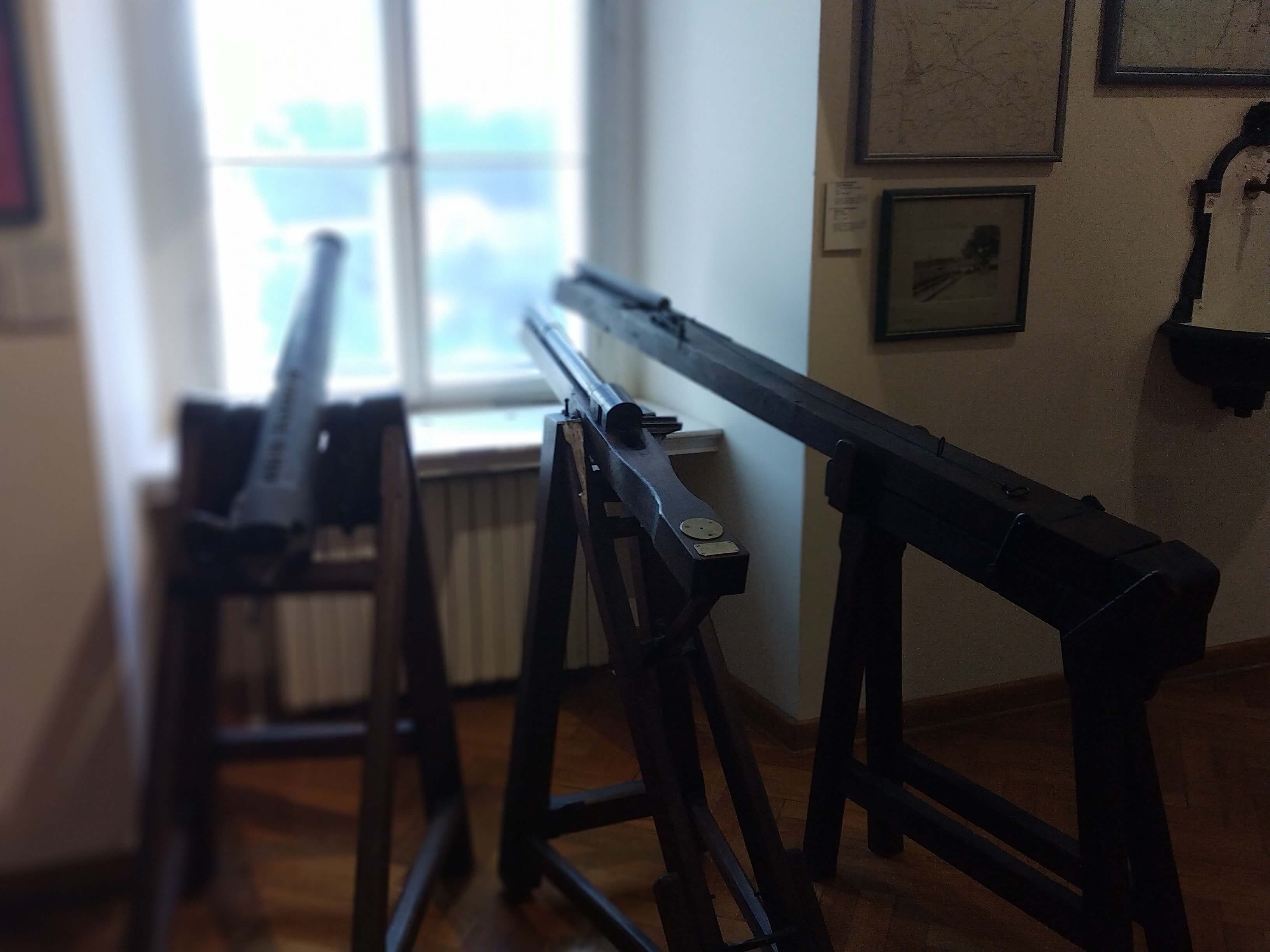
Three cannons showcased at Zagreb City Museum © Ivor Kruljac / Total Croatia News
So finding yourself in front of Fort Lotrščak (whose entrance is located right next to the Upper town funicular station) is not recognizable if you are not a fan of loud noise as it can give you a sound fright even down below at Jelačić square and the surrounding area. But, for the brave ones, the Grič cannon can provide a unique souvenir from Zagreb. It doesn't use live ammo (the cannon is modified so it can't), but it does fire several pieces of thick cardboard that then flies down to the area underneath Lotrščak's entrance and smelling like gunpowder.
Ceased fire
Despite being a regular background sound for the experience of living in Zagreb, Grič cannon went through periods when it ceased fire and stopped making statements. The first such instance was World War I and then followed by the war in the nineties. Most recently, the cannon was silenced after the Zagreb earthquake on March 22, 2020, but it re-fired hot and heavy sometimes in May 2020. However, followed by the December 29th Petrinja earthquake, which was also felt heavy in Zagreb, the cannon is silent even today.
„We are not quite sure when it will re-fire“, briefly commented the Zagreb Tourist Board member that welcomed me in Fort Lotrščak, one of the locations where Zagreb TB has a regular stand. Still, despite the cannon being silenced, you can climb and sightsee Lotrščak, the famous cannon as well as the watchtower on top of the Fort, for the prize of 20 kunas.

One of the exhibitions at Lotrščak © Kula Lotrščak
The Lotrščak Fort address is Tomićeva 9, and the Fort occasionally also hosts various exhibitions at times too. But, the cannon is a regular feature, and there are lots of info on the history of the cannon and the Fort itself there too on the walls- both in English and Croatian.
Learn more about Zagreb on our TC page.
For more about history in Croatia, follow TCN's dedicated page.
Quarantine Escape or Something More: How French Youth Live In Croatia
26 June 2021 - One TCN intern interviewed four young French people who recently moved to Croatia about their everyday life, impressions, and preferences here. A look at how French youth live in Croatia.
They came to Croatia for different volunteering projects regardless of coronavirus pandemic, but likely would recommend their new abode to fellow countrymen as a good place to survive quarantine. The luckiest of them Mathias (26) got a chance to arrive in Split in February 2020, Axelle (22), and Clemence (22) joined him nearly a year later. Mathilde (23) came to Zagreb sometime between this period, in September 2020.
Is the weather similar to Nice?
The climate is continental – low temperatures in winter and high temperatures in summer. “In Zagreb, there is often a fog during the winter,” Mathilde shares. Thick fog looks unusual for newcomers and from time to time creates true ‘Silent hill’ views in Zagreb country. “It’s not windy, but you don’t see the light of the sun during two months,” she continues.
On the contrary, Split is a windy city, however, even during the winter the sun shines a lot. There are winds in France, Mathias notes. He fails to find a French analog to the well-known Split ‘bura’, a cold north-west wind that long till 10 days in winter. But there is ‘mistral’ wind in France, similar in the name and effects to Croatian ‘maestral’ that comes to Split from the north-east in summer.
If you’re sensitive to weather, you’ll probably feel winter winds in Split. Summer winds will help you. The wind cools the atmosphere, thus summer heat is handled easier in the Dalmatia. Axelle and Clemence who came to Split for spring and summer characterize the weather solely as perfect. Both moved from the northern part of France and began to enjoy sunbathing here. Mathias compares the climate in Split with Nice. “Similar in many senses… Apart from the landscape – there are more islands and mountains in Croatia,” he said.
Is air-con needed?
My French respondents almost don’t use air conditioning. Mostly they don’t have a need for it. Axelle actually doesn’t know whether there is any air conditioner in their office. The office is situated on the first floor, it’s cool there. As for apartments it’s normally equipped with air conditioning systems. However, girls in Split are satisfied by shade from the inner yard of their house. During the summer, they just open windows wondering for what purpose these double shutters are designed. They’ve never met such a design in France. Mathilde doesn’t use the air conditioners for ecological reasons. It pollutes the atmosphere a lot.
Why do you apricot jam in a croissant?
Young people are usually simpler with food. Two of them are vegetarians, but they easily adapted to Croatia. “In France, we consume a lot of cheese,” Axelle claims. You can buy some basic cheese here like Emmental, you can buy soft cheese like mozzarella and feta. Mathias who isn’t a vegetarian, but a foodie confirms that fact. “There is a huge lack of French cheese .” You’ll survive, but you’ll miss cheese. “I need cheese in my life,” Axelle says and goes to buy it without looking at brands.
On the plus side, there are many fresh vegetables in Croatia. Mathilde enjoys visiting open markets – you can talk, practice Croatian, create links with people, and support local producers. And prices are cheaper than in the supermarket. Furthermore, the open market challenges your traditional tastes. While as in supermarket you’re guided by familiar names on the shelves, open market encourages you to improvise and try something new. Clemence started to eat much more vegetables in Croatia. Mathias who also visited the fish market has enriched his nutrition with seafood.
Food prices in Croatia are lower than in France. However, moving here you should configure your expectations correctly. Prices are lower, but not really low. And, of course, this isn’t about imported items. As a result, Clemence eats less ‘Nutella’ here. Hopefully, it was not a huge loss. Mathilde praises Croatian pastries, whereas she loved French pastries as well. ‘Burek’ is a universal pleasure; it has vegetarian options with cheese or spinach. ‘Burkifla’ or ‘strudla’ are a nice choice for the sweet tooth. The only stuff you should be careful with is a croissant. In Croatian bakeries, they often offer croissants with apricot jam (‘marelica’) and French often describe its taste as disgusting. Just clarify on a cashier that you want a normal croissant!
Wine is wine, if you do it in France, you’ll probably die!
Apart from croissants with apricot jam, one more strange thing the French can occasionally order in a cafe is coffee with cold milk. It’s better to specify what kind of milk you want – hot or cold, because during the summer season Croatian cafes often serve coffee with cold milk as in southern Europe. Axelle came from northern France and never expected to have something hot ordering a coffee. Otherwise, typical for the Balkan region ‘Turkish coffee’ is rarely found in modern Croatia. Expats including my respondents from France don’t like it. “First 2-3 sips are ok, but next you feel this nasty coffee ground…”
A coffee drinking culture must be attributed to the advantages of life in Croatia. You can take one coffee and stay for 3 hours. “You can’t do it in France. If you stay more than an hour, it’s anticipated you will order one more coffee or another drink,” Axelle explains to me. And it’s not only about the economics of cafes. In France, you sit in a cafe for half an hour and then go back to your business. In Croatia, there is this chill way of life. You drink a coffee, chat, and sunbathe, and don’t hurry. Croatians consume a lot of coffee. When it’s too much for Clemence and Axelle, they switch to beer. Mathilde hates coffee, however still has a lot of Croatian friends. She drinks hot chocolate. She misses 'churros’ to hot chocolate.
Mathias spent enough time both in Split and Zagreb and would prefer Zagreb cafes and bars rather than Split ones. Such places have more variety, events, and different peoples there. Mathilde who is been living in Zagreb for almost a year doesn’t attach importance to it. She’s not a huge bar lover. She settles for ‘Antibar club 44’ where she holds her French evening with students. Axelle and Clemence also have their favorite place to drink in Split. In ‘Tri volta’ there is no crowds or fancy drinks as ‘ice coffee’ or ‘Aperol spritz’, but the location and atmosphere are great.
In public drinking beyond bars and its terraces, the biggest surprise for the French was a way of drinking wine. Croatian youth usually dilute wine. Red wine plus coke has the special name ‘bambus’. White wine is diluted by sparkling water. Both kinds of wine can be watered down. This practice has a simple explanation: diluting enhances the taste of cheap wine that youth usually buy. Also, this practice is known in Italy and Spain, but not in France. Wine is wine, Axelle claims emotionally. “If you do it in France, you’ll probably die!” Clemence echoes.
Let me pay for anything!
Nobody from my young respondents spends much money on entertainment mainly because of plenty of outdoor activities. Mathias became a true expert in hanging out with people in Split. This activity requires only being at the right place at the right time. That is late in the evening on Matejuska pier and after midnight on Ovcice beach. Girls prefer Matejuska, because the public is more varied there. Youth and locals gather on Ovcice beach. In fact, Axelle and Clemence once visited the Croatian party where they were the only foreigners. It was not bad, however, it’s certainly easier to start a conversation as the majority speaks English.
Axelle shares that she would like to visit the ‘Froggyland’ museum in Split. Till the moment she didn’t manage it. With Clemence and other friends, she also tried to go to the cinema, but finally, it was ‘sold out’. Split actually discourages finding these kinds of entertainment. When you have leisure time, go straight to the beach, read a book in the shade, relax, run along a coastal line – there are so many easy ways to enjoy in Split. Mathias concludes that museums didn’t impress him and the cinema was normal. You can watch original American or French movies with Croatian subtitles.
Mathilde has succeeded to go to the cinema about 10 times. Interested in art she visited several museums in Zagreb. She’s visited once a classical concert at the Croatian National Theater. It’s a pretty good cultural gathering, although Mathilde recognizes that she would have better if it were not for the language barrier. She doesn’t go to the cinema or museum spontaneously, only when friends invite her. A pleasant surprise is that an inviter pays. Croatians are very welcoming and open people, thus you often fall into situation “Let me pay for anything!”
Where is the name of the bus stop?
Croatian hospitality is one of the reasons to make traveling your hobby here. Mathias and Axelle recall the other reasons. Croatia is a comparatively small country, most destinations are easily reached. There are a lot of historic towns, wonderful nature places. Islands aplenty stand alone. “You go on the islands and suddenly feel like you are in another county on vacation. I like island vibes!” Axelle and Clemence visited Vis together loved the nature of the island-geopark.
Zagreb is a student city in Croatia. There are more students and more expats as well than in Split, therefore society seems more liberal and open-minded. Varazdin looks like a typical Central European town. Pula is pretty boring during the winter, but nice in summer, Mathias lists his travel within the country. “I’m not a fan of Slavonia. This is not a region for tourists, except Vukovar, maybe, for those who are interested in history. It’s good to visit when you live in Croatia for a long time,” he says.
Split is a very special story. Mathilde surprises by its closeness to mountains and sea. French who constantly live in Split loves it for a combination of historical heritage and daily dynamic life. “Diocletian’s palace is a miracle, Clemence tells. I like to go for a walk there. And now after many walks, I can say that I really know it.” Axelle stresses one more advantage: “A lot of sights are situated next to Split – Solin, Klis fortress, etc.” Omis, a tiny city with rocks is suited for hiking, meanwhile, there are enough hiking places just by the way from Split to Omis.
In regards to transport within the country Mathias’s used to prefer trains in France. A train as a comfortable and ecological means almost doesn’t exist in Croatia. It’s a disadvantage. But my French respondents quickly learned how to deal with buses. They usually travel by bus. The fact that bus stops in Croatia have no names was a little challenging for the first time. Axelle remembers how she was checking her way on Google maps. “It just takes some getting used to. In France each stop has a name.”
Could you, please, write down the name of this movie in Croatian for me?
“I don’t see any difference in culture between France and Croatia,” Mathilde states. The point is that the French consider ‘culture’ as a broad concept, barely the same that ‘civilization’, i.e. Croatia relates to the same European Christian civilization as France. Looking in-depth Croatian culture is not well-known in France.
Axelle purposely read about Croatia before coming here to have basic grounding. After 4 months in Split she knows, for example, Split raised pop-diva Severina. Clemence listens to rapper Nucci. Although he’s from Serbia, his music can be related to the ‘Balkan turbo-folk genre. They would like to know more popular songs, movies. etc. Croatians are glad to recommend some good stuff, but a problem is that they pronounce names in Croatian, and it’s difficult to catch and to remember too.
'Pomalo’
My respondents note the obvious visual difference – there are only white people on the streets. Society is more homogeneous. Dress is more homogeneous as well – no brassy, no sexy. “Don’t distinguish yourself,” the Zagreb expat concludes. Otherwise, Mathias and Clemence report that in Split people care about appearances much more, than in cities of France. Clemence is used to seeing fancy girls with big sunglasses and other attributes in Split every day. “Even on Monday morning… Once I was walking down the street in my probably worse-than-usual, after-party look. These girls looked at me really oddly…” she remembers.
Streets are cleaner in Croatia. It’s clean in France, Axelle stands up, but you can see some trash from time to time. Croatians are not taught since childhood to sort the garbage, to recycle as much as it’s done in France. “From the first glance they seem less informed, but in real life they’re more concerned,” Clemence shares her observations. Streets are safer too. “I feel really safe here. I have no fear,” French girls from Zagreb and Split agree in this. In France, you’d better go in a group of 2-3 girls together at night. And anyway somebody will impose a conversation, follow you. In Croatia, you can calmly be alone on a street at any time.
In memory of their blissful stay in Split two of my respondents and one more French girl did tattoos with the Croatian word ‘pomalo’. It’s literally translated as ‘slowly’, ‘quietly’, ‘little by little’. “Our tattoos mean more than literal sense. I mean more when I say ‘pomalo’ Clemence explains. ‘Pomalo’ commonly used to describe a Dalmatian/ Croatian mentality in one word: ‘take it easy’, ‘don’t rush’, ‘with pleasure’, ‘relax’, ‘hello’, etc.
For more, follow our dedicated lifestyle section.
Maritime Welfare in Croatia: Drvenik Case and What Law Says
June 25, 2021 - The issue of maritime welfare in Croatia was raised once again after a heated discussion on a beach in Drvenik Veli. Here are the details of the case and legal guidance to the maritime welfare in Croatia.
With the 2021 tourist season already being 58% better than 2020, tourists once again visit Croatia as one of the top holiday destinations.
However, like any year, the season can't go without at least some sort of incident.
Lovely beach, disgusting words
Yesterday, Croatia was shocked and enraged with the incident that happened on a beach on Drvenik Veli island (not so far from Trogir). Croatian journalist Tonka Alujević and her friend went to a beach where two Czech tourists started complaining that it's a private beach, perks of paying for a villa, and that Alujević needs to leave. Alujević refused to leave, stating that beaches are maritime welfare and cannot be privatized, refusing to move. After, as Alujević claims Czech tourists hit her head with a phone, they called the villa owner. 24 Sata daily newspaper published a video Alujević's friend recorded.
„Ma'ams, Ma'ams, how did you get here? On foot?“, asked the owner on a phone that was on speaker and held by the Czech tourists.
„I'm a journalist. Do you know Croatian laws? Do you want to end up in media?“ replied Alujević with a chill face while smoking a cigarette on a sunny day at the beach.
„Come on, put me in the media, come on put me! But first, go to the land register and see that my beach is private," screamed the owner in Croatian, with a lot of derogatory phrases (if only Czech tourists had a translator to understand the rich swear word heritage of Croatian language, right?)
The whole thing ended up with inspection stepping on the scene. Despite the video footage being clear, the owner, identified by Index.hr as Tomislav Meštrović, owner of Centovi Dvori Villa, tried to justify himself, saying everyone is welcomed at the beach, and he attacked the women because they passed through his doorway.
„No, I have no idea what video, who what... who knows what that is... I called the police for trespassing through my land“, said Meštrović to Index.hr when asked about the footage.

the conversation at the beach, screenshot/ 24sata
Law and order
Following this story, Index.hr's columnist Goran Vojković analyzed the law to clear up the issue of maritime welfare.
„The Maritime Welfare and Sea Ports Law states 'at least six meters from a line horizontally distant from the line middle waters'. But it can be wider, for example, if part of the land that in its nature or use serves to exploit the sea. It can also be narrowed- for instance, if support walls or a public road are close to the sea“, Vojković listed general rules but adding that maritime welfare border is specifically determined.
„So, the coast is free to use where the beach is, in general, six meters. You can come and use it for your needs, such as bathing, tanning, or walking. The land behind can be private, but the coast cannot“, concluded Vojković.
On the other hand, there are ways to limit the use of maritime welfare.
„There are some parts of the coast where you cannot enter. You can enter the marina and walk around it, but only until 10 pm. You cannot enter at all in a shipyard port. Those are the parts of maritime welfare for which the state assigned a concession to someone. The concession can limit or terminate public use“, explained Vojković.
Additionally, the law states that it is possible to have a beach in its concession and limit public entrance. But it needs to be registered, and the prices are so expensive that there are very few beaches like this in Croatia (Drvenik one not included in that small list).
„If someone claims that has a concession and that he/she can exclusively use some part of the coast, he needs to have a proof you can easily check in the register. I repeat, there are very small examples; even beaches in front of five-star hotels are public good“, Vojković pointed out.
And such beaches are filled with deck chairs, food stands, etc. But as Vojković pointed out, on a public beach, you have the right to bring your own deck chair, your own food, and drinks, and you can't be forced to consume content on the beach.
„In short, enjoy the Adriatic coast- with some very small exceptions of exclusive concessions, the entire coastline (including island coast) is free for your use and joy. Nobody can hold a grudge or complain if you came to a bath where they think it's 'their' beach. If someone is uncomfortable, don't debate, call authorities“, advises Vojković.
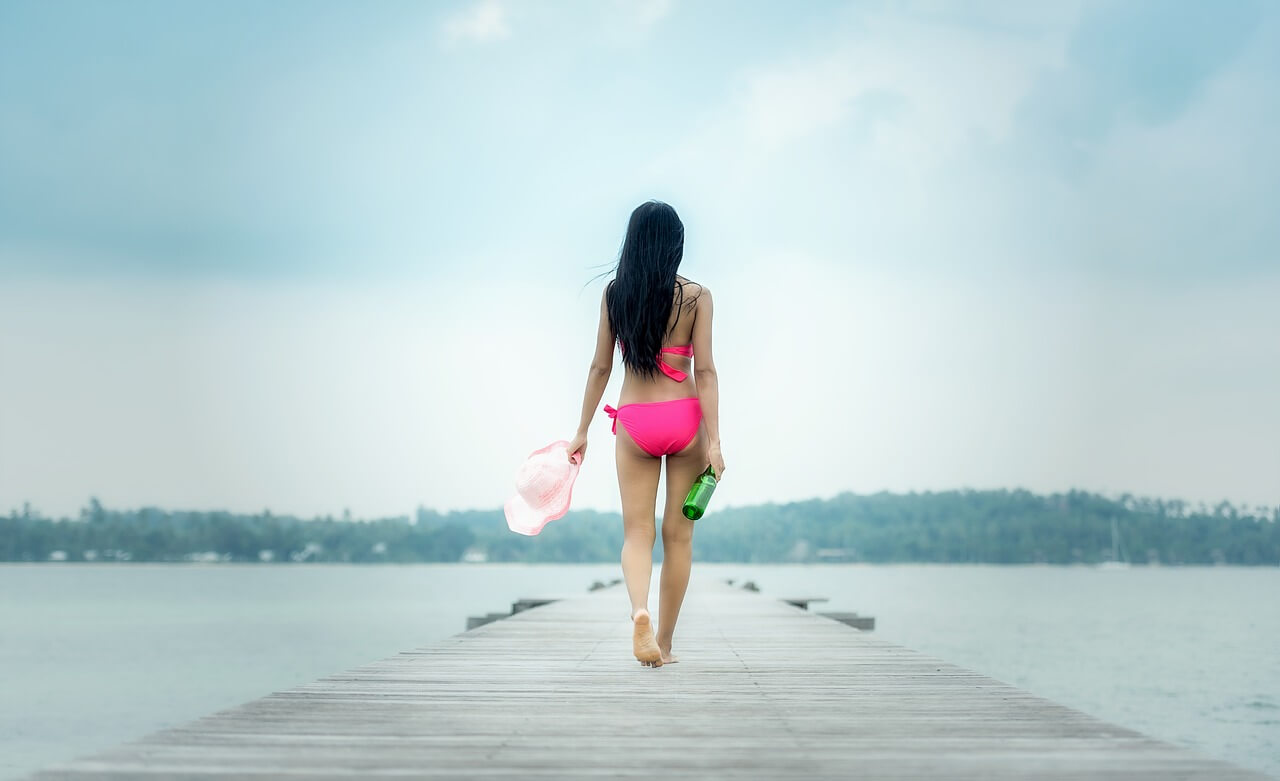
Pixabay
And the beach is open for public happily ever after
As Jutarnji List reported, the Drvenik case has a conclusion to an intriguing plot. Unhappy with Meštrović's behavior, Dalmatian locals went vigilantly and started writing bad reviews on Google, seeing the villa losing its value and tourists.
„Even though neither the building, nor its surroundings changed since the video was released, the unkindness of the owner was enough to move once-prestigious villa to the lowest grading Croatian places on Google“, says Jutarnji.
A couple of more lessons can be learned for a successful and enjoyable season from this tale.
For owners: present your offer fair in accordance with the law as transparency is the best way for your offer to beat the competition.
For tourists: if you were promised a private beach, but you see locals coming, don't be rude to them and don't attack them. The only one you can really be mad at is your host, who perhaps lied about what they can truly provide.
Learn more about beaches in Croatia on our TC page.
For more about travel in Croatia, follow TCN's dedicated page.
Croatian Mountain Rescue Service Book Presented by Ivo Pilar Social Research Institute in Gospić
May 16, 2021 - Suitable for the 30th anniversary of one beloved Croatian civil protection organisation, the Croatian Mountain Rescue Service book was presented by the Ivo Pilar Social Research Institute based in Gospic.
With many tourists and visitors (and Croats too), not being too careful when going on ''their little adventures'' up mountains such as the Dinara, Velebit, or elsewhere, the Croatian Mountain Rescue Service (HGSS) is as busy as Batman in Gotham. What with saving people who get lost, being bitten by poisonous animals that live on the mountains, or dealing with people who have hurt themselves in any way, they truly are praised as superheroes and are often the most beloved people on Croatian TV, either in commercials or when the press, telling their heroic tales.
Apart from mountains, their training was also shown to be useful for easing the numerous issues left following the 2020 earthquakes too.
Marking the 30 year anniversary of HGSS's station in Gospić, the Gospić Culture And Information Centre saw the presentation of the book ''The Day Replaced the Night, The Bura Wind Cleared Our View“ (Dan Je Zamijenio Noć, Bura Nam Očistila Pogled), last Friday. As reported by the Ivo Pilar Social Research Institute website, the authors of this pop-science monograph are dr. Ivan Brlic, dr. Nikola Simunic and Dr. Anita Busljeta Tonkovic.
''The Gospic HGSS station, even though with a relatively small member count, operates on the biggest and toughest rescue surfaces in all of the Republic of Croatia. This monograph, through geographical, historical and sociological context, aims to explain how important, but also how difficult the mountain rescuer's job is. The Croatian Mountain Rescue Service book, covering over 150 pages in an honest and interesting way, shows why HGSS is one of the cornerstone operative forces of civil protection and that, in its professional, altruistic, and humane approach, contributes to the overall civil rescue system with the goal of saving human lives,'' they stated from the Ivo Pilar Social Research Institute.
Apart from the authors of the Croatian Mountain Rescue Service book themselves, the event saw HGSS Croatia's main man, Josip Granic, the director of the HGSS Gospic station, Josip Bozicevic, Deputy Interior Minister Damir Trust, as well as the Ivo Pilar Social Research Institute Headmaster, Dr. Zeljko Holjevac sit down and speak. All of them agreed that this book is an important statement of gratefulness to HGSS members for all of the hard work they do.
The book is a product of the Ivo Pilar Institute's successful collaboration with the institutions in Gospic, and the wish for the further and deeper continuation of that cooperation was expressed too. In case of need, HGSS can be reached by calling 112. But, to prevent becoming yet another damsel (or a bachelor) in distress, it's not a bad idea to check their safety guidelines for enjoying the outdoors in Croatia.
Not to far from Gospic is the North Velebit National Park with its glorious mountains, about which you can learn more on our TC page.
For more about the Ivo Pilar Social research Institute in Croatia, follow TCN's dedicated page.
Brač Trips: 3 True Stories About Hospitality, Safety, and Entertainment on the Island
15 June 2021 - One TCN intern visited Brač three times and learned first-hand about hospitality, safety, and entertainment on the island. Even though these stories are unlikely reproducible, it shows a special atmosphere of the island where you can be a most unprepared and careless tourist and leave your fun up to islanders. A look at three Brač trips!
1. Supetar and Sumartin: before the tourist season
A story to tell about Brac is olives, olives, olives... Along the 40 km from Supetar, the ferry port, and administrative center, to the most eastern town of Sumartin. From time to time, olive trees are changed by other species, but mostly a road view looks really monochrome. The good news is that olive is an evergreen plant, therefore you can come on Brac out of the tourist season.
The bad news is monoculture. That is probably due to historical tradition. People say that during the Venetian rule on Brac no young man was allowed to marry until he had planted a hundred olive trees. Maybe, it also relates to a lack of knowledge about other plants. Some few people in Split can recognize Phillyrea (mock privet) trees, although it is also from the Oleaceae family, a close relative of the olive. A few know how an olive flower looks like while everyone cares only about olive oil. An olive flower is small and appears early. You can see it if you come to Brac from the end of April till the beginning of June.
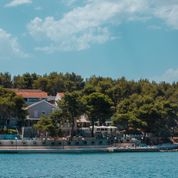
A possible reason for the prevalence of olives there is also unpretentiousness. Why plant grapes to constantly tinker with them when you can plant olive trees and don't bother either yourself or your descendants within the next 400 years? In sum, islanders have more time to care about their guests when they care less about the garden! They do care as I've learned from my own experience coming well before the start of the season. There were barely any tourists and no young people on the streets.
There are kindergartens and schools on Brac, but to continue studying, you have to go to the mainland. Unless you've decided to become a stonemason. There is a known school of stonemasons in Pucisca. Besides olives, Brac stone is another export brand of the island. Diocletian's Palace in Split, the most beautiful churches in Croatia, the parliament buildings of Austria and Hungary, and the White House in Washington DC are made of this stone. Returning down to earth it seemed to me that sculpture is quite a popular hobby among the locals, therefore you easily notice interesting sculpting along the roads in villages like Selca and Povlja.

There are no faculties or universities on Brac. Students who left to study on the mainland unlikely to come during the winter season as well young tourists seeking a beach party paradise on Brac Bol in summer. Thus, I was going to spend my weekend walking and sightseeing alone. I took a bus from Supetar to Sumartin and went other distances between the villages by foot, 24 km in a day. However, I was most impressed by the social kind of entertainment - a village party in Sumartin on Saturday evening. I had done 24 km and wanted to drop dead on my bed for a few hours, but the hostel owner's daughter (of my age) who met me had another plan.
We have a party up the street. You can come with me. I invite you! - No, thank you. I've walked 24 km. I'm bloody tired, I want to have a rest. Sure, I understand. You need to have a rest...But actually, you know, we are young, we don't need much rest, so, you can go to a party with me! - OK! [I didn't have the energy to argue]
The party was devoted to the end of construction of the ground floor of a house that one young guy from the village built. Village friends had slaughtered and roasted a lamb, they brought homemade wine and olive oil. I felt in the first few minutes my visit was not in vain.
Organised 'village tours' are not popular among youth, it usually lacks true authenticity that you can meet as an independent tourist. It was the very case for me. I met fishermen, builders who speak only Croatian, students from Split (they speak English). Naturally, they played Balkan turbo-folk music. They were not good at dancing, so when guys didn't know what to do during a 'groovy' song, they grabbed heavy objects (a poker, a barrel, etc.) and began to lift them. Meanwhile, girls did sit-ups crazy fast!
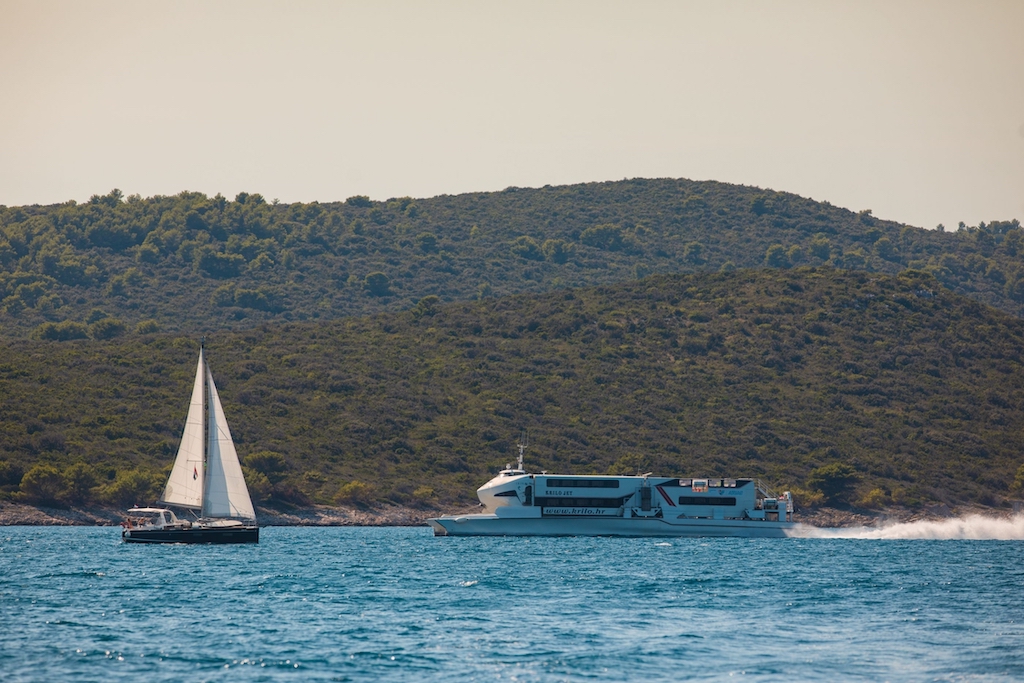
I was going to give a dance workshop and climbed up on the table, but two girls jumped in there after me and started a conversation. They literally attacked me with questions, therefore we stood on the table for an hour just chatting. Perhaps, we would never have such a chance at a nightclub party! A chance to meet at the village party a fan of the Russian tv-series 'Kitchen' ('Kuhinja') was even less, but Eni from Brac was flattering a lot to my Russian background.
The most epic moment happened to me when a son of the owners of the house where we had a party - the biggest house in Sumartin, only the church is higher, - was showing me everything he owned: a house, a gazebo, a grill terrace, a bar, a garden, swimming pools, garages, etc. Let's say, a sightseeing tour accompanied by nice complaints. "When I go somewhere with friends, I pay for everybody... When I show my parents anything I like, they buy it immediately for me... It's so hard to be independent if your parents are rich..." Top complaints, huh? I really had top entertainment that night! Finally, it happens amid a contrast: while some people on Brac apply for EU funds for rural areas development, others suffer from a family abundance. It's a pity and simultaneously a good topic for reflection when you travel before the tourist season.
2. Sutivan and Milna: waiting for a miracle
My second trip to the island of Brac occurred in April. At this time islanders start slowly preparing for the season. A lot of places are still closed, but the atmosphere becomes more welcoming and bracing. Largely, I would say it's a good direction on Brac regardless of the season.
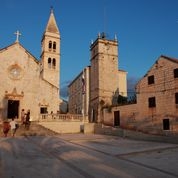
A little derogation about the 'Su' towns. Su is Latin 'Sv', two letters have a similarity in writing and pronouncing. Sv is short for 'Sveti' (Saint in Croatian). In this way, Supetar is Sveti Petar, Saint Peter's town, Sutivan is Sveti Ivan, Saint Ivan's town, etc. I've already seen Supetar, ferry port, thus I just did a loop for my friend come from Split for the first time. Riva, St. Peter's church, Jobanova Street where you can easily think that Croatia is the most beautiful country in the world - that is Supetar. At the west exit from the city, we found a firehouse. I'm interested in fire departments on islands because they are voluntary, not municipal. Their volunteer showed us an old fire truck donated by Great Britain. When he learned I'm from Russia, he said that his neighbors here are Russian too. A wife lived for 5 years during the Chechen war in the 1990s. A husband is a healthy Russian man, he can drink a liter and a half of vodka. Great job!
We travelled from Supetar to Sutivan on foot. Further movements around the island were planned by bus. Waiting for the bus to Milna I put things from my bag at the bus stop. "Get up! Let's go! Don't forget your phone!" my friend commanded. I answered "No way! I would rather forget my own hand."

Actually, I paid attention in Milna and noticed a lot of yacht tours on Dalmatian islands do stop on Brac in Milna bay. I liked Milna as soon as the bus began to approach it on the serpentine road.
On the waterfront (literally 'first line' by the sea) there is an abandoned multi-storey house. I don't know what happened there, but the holes in the ceiling/ floor look terrible. A blockage on the stairs between the first and second floor doesn't let to climb up higher. Anyway, I would not recommend entering a house for safety's sake. In a corridor on the first floor, we found a nice retro 'archive'. A poster inviting for the Final concert of the 3-rd Concert-Opera Seminar in Milna on August 21, 1981, hangs in my room in Split.
Waiting for a bus back to Supetar we were chatting with my friend at the bus stop. The topic was an exes' birthday: to congratulate or not. I implore you: Do not discuss such topics at the bus stops! When the bus came, I was lost in thought and... I forgot my smartphone at the bus stop. I realized it in a couple of minutes on the bus. But the bus, apparently, goes faster than it seems. I asked a driver to stop. I'd prefer to ask him to turn back to Milna, but we were on the serpentine road. We went 52 min down the serpentine on foot.
Somehow I was sure my phone was still there at the bus stop. It wasn't there! We asked in a nearby cafe - no one knew. We tried another cafe - it was closed. We asked men working at the marina opposite the bus stop - they were really enthusiastic to help me. They actually proved my hypothesis that everyone knows everyone on the island and it's very safe on the island. Men remembered their friend was walking with the children near the bus stop. Through 2-3 contacts we found his number. Unfortunately, he didn't answer the phone. Almost desperate I wandered back to the bus stop looking around.
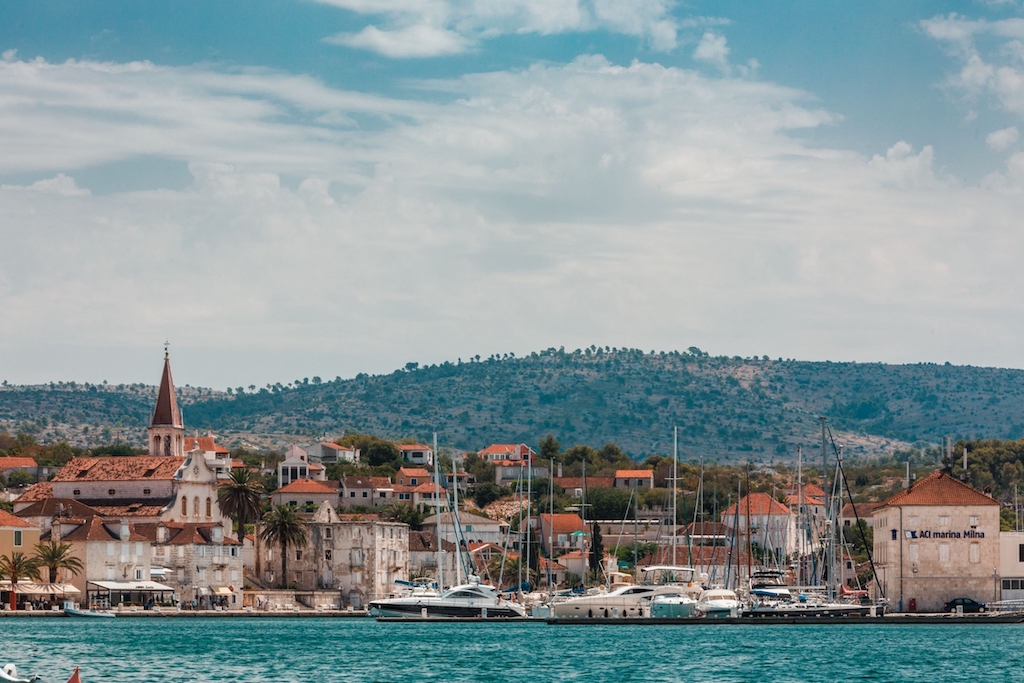
A group of people came towards me. "I have nothing to lose," I thought and came to ask them about the phone. And then a woman coming in the front took my phone out from her purse! It was pure luck, because her company was moving to the parking place behind the bus stop to leave Milna. Then we tried our luck again, because we got off the last bus to Supetar. We've overcome the serpentine road before we succeded to flag cars down. One senior man gave us a ride to a crossroad, Supetar was out of his way. Then two young men drove us straight to the ferry to Split. One wondered whether my friend and I are daughters of those Russians who own a mansion somewhere nearby. "No, wait, it was the mansion of a Hungarian oligarch, not Russian," another guy said. Anyway, we were not, so they switched a topic.
3. Bol: ideal summer beach weekend chill trip
I was deliberately postponing a visit to Bol and Zlatni Rat on Brac to the beginning of summer. Out of the season, you always risk being disappointed there, especially when you've already learned something about the prominent horn-shaped beaches (Zlatni Rat in Croatian means 'Golden Cape', or 'Golden Horn'). Golden Horn needs sun to be gold.
Besides sunny weather needed, a trip to Bol is easily organised leisure that few things could spoil. Ferry boat trips Split-Supetar and bus trips Supetar-Bol matches perfect, thus you don't lose time waiting. Also, it's pleasure to continue with a green promenade from Bol village to Zlatni Rat beach after a mountainy road to Bol. I would, perhaps, aware that there are a lot of people in the season. However, it has some advantages. For instance, my friends and I came on Sunday and saw a wedding on the square in front of the parish church (Zupna crkva Gospe od Karmela) in Bol.
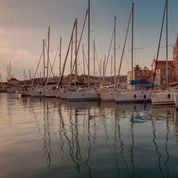
Returning from the beach we noticed that the return trips to Split are also perfectly matched. Therefore, you have all the possibilities: 1) to have dinner in Bol and go back to Supetar/Split by last trips; 2) to take the second to last bus to Supetar, have dinner there and go to Split by last ferry trip; 3) to go back to Supetar/Split by second to last trips and have dinner in Split. We choose first and enjoyed island hospitality in one of the restaurants in Bol. "Why is the place called Jadranka?" a question came to my mind. "My name is Jadranka," an owner answered to me. She was the only child, and (grand) parents called it after her. With her husband, they cook all dishes and keep this place already for decades. One more sign of true hospitality is that they remembered our friends who visited it two months ago.
For more on travel in Croatia, follow TCN's dedicated page.
Croatian Travel Festival Celebrates Its 10th Edition in Šibenik
June 8, 2021 - The tenth edition anniversary of the Croatian Travel Festival will be held in Šibenik from June 10 to 13. Dino Rađa and Ivan Pažanin will be guests at the festival for the first time, who will be in the beautiful ambiance of St. Michael's Fortress.
As reported by HRTurizam.hr, the Croatian Travel Festival celebrates its tenth edition this year, and on behalf of the organizers, the travel agency "Croatian Travelers Club", the director and initiator of the festival, Nikola Baraka, said he was proud that this unique concept has grown from year to year and became recognized as a meeting place for travelers and travel writers with an audience that gets to know the world by listening to their stories and watching photos and videos.
"The Croatian Travel Festival has managed to include the city of Šibenik in the travel calendar of many of our famous travelers and travel writers, many of whom return to it from year to year, and this, given how much time these people spend outside Croatia, is a great success, and a great promotion for the destination", concludes Baraka.
This year's edition of the festival will traditionally open with talks with the people of Šibenik on Thursday, June 10. Nino Rak, Darko Gulin, and some klapas from the famous klapa Šibenik, will be the first guests of the festival, on the lawn in front of the club Azimut, which will be the location of the opening, but there will also be other gatherings during the four days. At the same location, Mija Dropuljić, Željko Garmaz and Maja Sajler Garmaz, Tomica Kristić, and the company from the "Putoklinci" platform will tell their travel stories in a conversation with the presenter Vlatka Vužić, and also a couple of people already known to the public: Jurica Galić Juka and Goran Blažević, both of whom will return to the festival with new stories.
On Friday, on this most beautiful stage, Croatia's great basketball player Dino Rađa will share his impressions from traveling during a successful sports career, but also from traveling the world on a motorcycle. On the same evening, the audience will find out what "Love around the world" looks like. This story will be brought to Šibenik by the famous Croatian travel writer and photographer Davor Rostuhar, who, wanting to answer the question "What is love?", Spent his "honeymoon" on the road with his wife.
On Saturday, June 12, the guest at the fortress is the playwright and nomad Jasen Boko, well known to the festival audience since the first edition of the festival. This year, he brings a touch of India to Šibenik, but also impressions from his numerous other travels, which he incorporated into travel books. Chef Ivan Pažanin, who is visiting the festival for the first time, will discover how travel affects his "gastronomic expression and creations". Talks with all of them will be led by journalist legend and travel lover Goran Milić, a guest at the festival's first edition.
The festival will also host the eighth award ceremony of the "Dijana Klarić" award, in five categories: best travelogue, best travelogue photography, best travelogue film, best project, and traveler of the year.
You can follow all the detailed information about the festival program, events, and tickets on the social networks Croatian Travel Festival and the Croatian Travel Club (Facebook and Instagram), while you can see the program of the Croatian Travel Festival here.
Follow the latest on flights to Croatia HERE and the latest travel updates and COVID-19 news from Croatia HERE.
For more on travel in Croatia, follow TCN's dedicated page.
A Trip on Solta Island: 6 Lessons I Learned from Locals
May 24, 2021 - A TCN intern takes a trip on Solta Island without preparation, encounters unusual experiences with the locals, and learns lessons that will be helpful for anybody visiting the closest island to Split.
1. Clothes do not make the man. A port does not make the island. Don't be too quick to judge.
Rogac port where the ferry from Split comes does not impress a traveller. Like most people, I had visited the more popular island of Brac before I went to Solta. Rogac loses out to shiny Supetar, the biggest city on Brac. The port of Rogac is tiny, there is nothing to do there, no people. However, exactly here in Rogac, the first strange story happened to me in the first hour after my arrival. I found one good angle between the yachts at the marina and sat down to take an on-arrival picture. Then someone called out to me...
"Do you know what this is in front of you?" a senior man asked me.
"No, I don't," I said. "I know what is a boat, a yacht, a ship, and this vessel is somewhere between a boat and a yacht, closer to a boat, of course, but what exactly it is, I've no idea," I thought.
"Are you a journalist?"
"No, I'm just a tourist. I came here for the weekend. I'm from Russia but currently work in Split."
"What do you think about your president?"
The question put me in an awkward position. This grandpa in a baseball cap with a canister in his hand, similar to a grandpa from 'Gravity Falls', looked nice. The matter was tricky. What's his opinion? What if our minds are the opposite? I did not want to argue with him. Senior people rarely change their minds, thus even my MD in political science wouldn't help me.
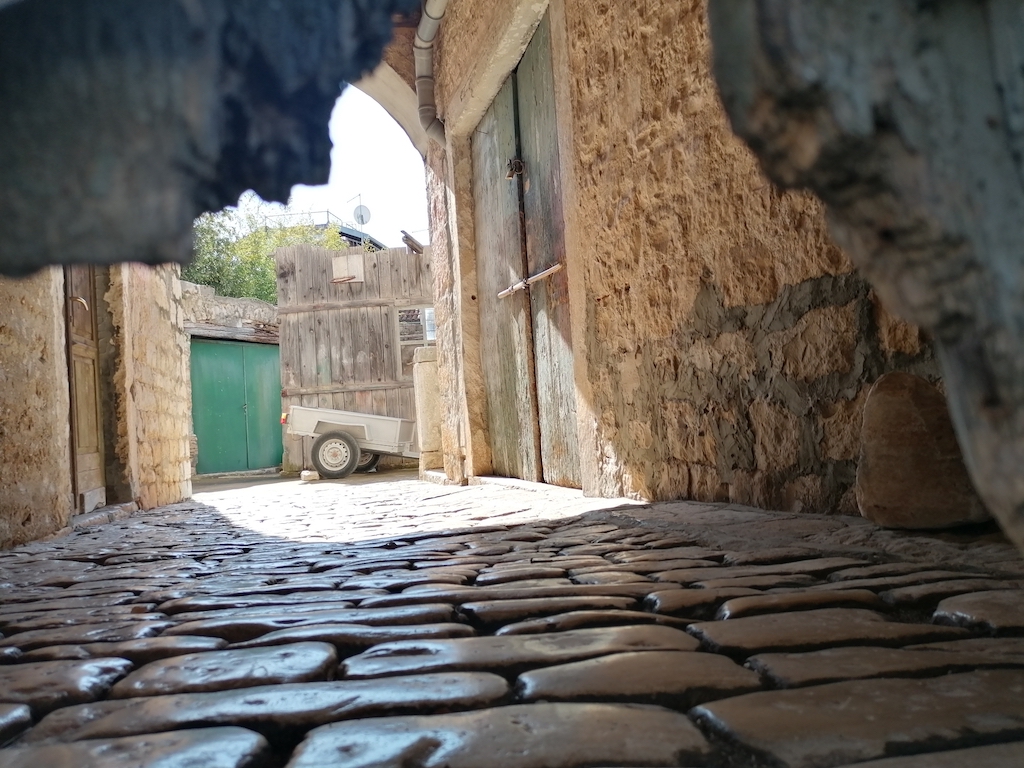
"It's hard to answer in one sentence about his 18 years of the presidency," I started to draw back the fire. Milan, that's his name, interrupted me. He told me that our president is a strong person he'd like to have as a major somewhere in Dalmatia. He said that he'd like to get vaccinated with the 'Sputnik V' vaccine. I guess that these statements should be regarded as a gesture of goodwill to me in any case.
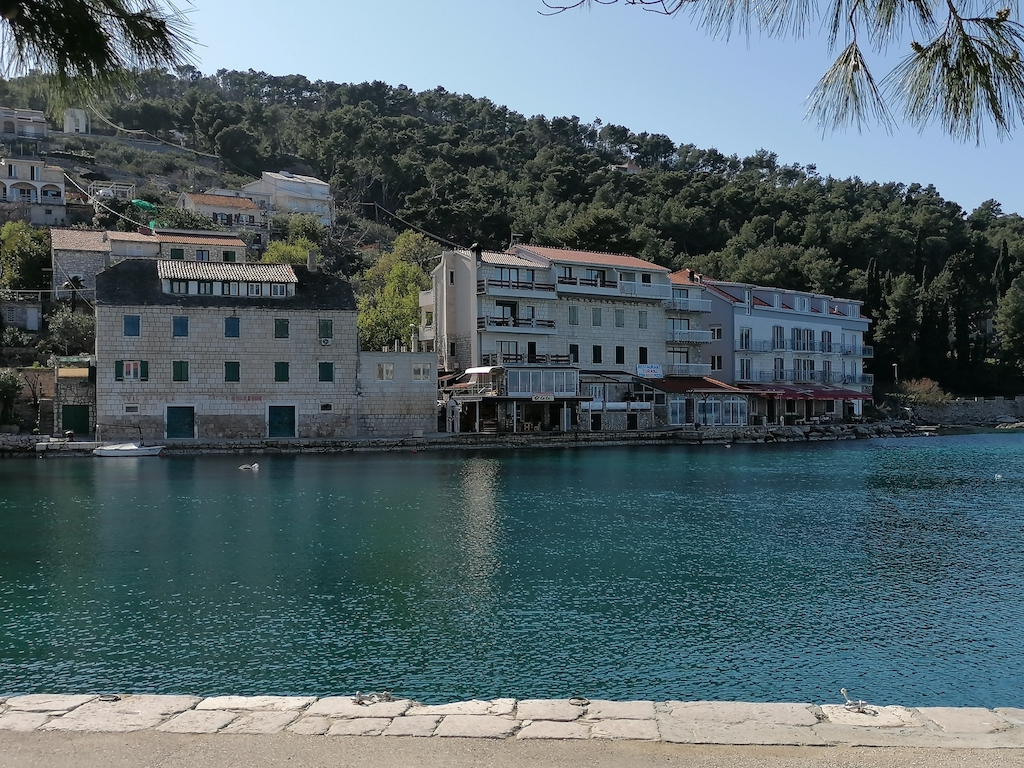
Actually, Milan knows about Russian-Croatian relations much more than the average person. He knows admiral Mate Zmayevic (born in the city of Perast, Dalmatia) who fought for Peter I in the Northern War, Alex Dundic (born in the village of Grabovac, Dalmatia) who fought for the Red Army in the Russian Civil War. He listens to Russian opera stars Elina Garancha, Anna Netrebko, Dmitry Khvorostovsky, and others. It's surprisingly pleasant for a broad-minded person far from tourist and nomad routes.
2. Take the initiative to talk to locals on the island.
Solta has wonderful nature and climate. Traditions of producing olive oil, wine, and honey here originate from ancient times. But since Solta Island is not very popular among tourists, you'll need to make more effort to get it. Even as you go to the island already prepared by informational sources, you have to be ready to ask, perhaps, to clarify something about wine tasting, olive oil tasting, or a honey farm. You go here ahead of the masses, take the initiative to start a conversation, and keep it!
I regret that I did not answer 'yes' to Milan's question of whether I was a journalist. Then I'd have more chances to guide our conversation to the topics I am interested in. Otherwise, it happened so that we were talking about themes that interest mostly a social group 70+-year-olds:
- life after death (Milan suffered two strokes and saw something on the other side);
- The Dulce Laboratory in New Mexico where human-alien hybrids were created;
- Orion correlation theory that says about the connection between the pyramids of Giza and the Orion belt;
- indigo children;
- masons, etc.
Certainly, I'd better answer that I'm a travel journalist and interested in things like what to eat, what to do, etc. So that, if somebody asks you on Solta, you can use the following answers I prepared in advance. "I'm a tourist from <...> and a wine lover."I'm a traveller and a gourmand hunting the local specialties."
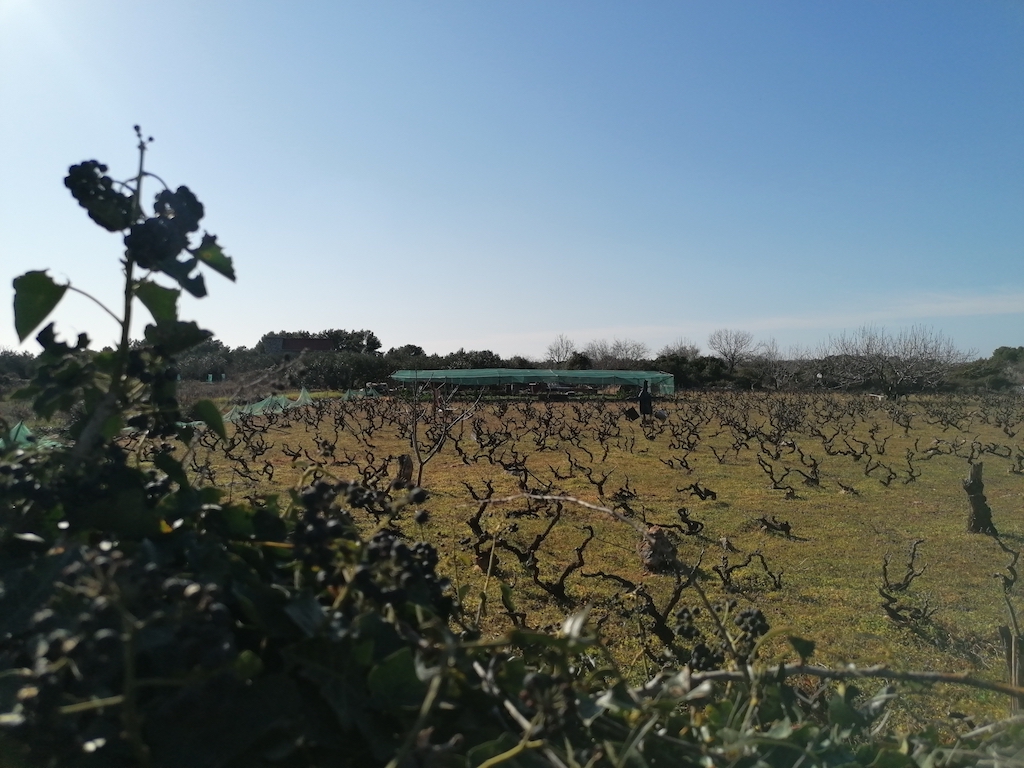
3. Don't be afraid to go around the island alone.
Saying goodbye, Milan wondered why I was here alone. "You don't have to go alone. Find yourself a husband. Not me, I'm too old for you, I'm over 72..."
I guess it was his joke about the age gap problem to marry me, because earlier he'd mentioned his wife was waiting for him at home, their three children, other common stuff.
Then he relented: "Well, all right, you can go alone. Don't be afraid. There are no poisonous snakes on the three Dalmatian islands - Solta, Lastovo, and Vis islands. But there are black widow spiders and ticks..."
As planned, I went through Grohote and Gornje Selo to Stomorska that I considered the most beautiful and lively town on the island. Besides, I was caught up in wanting to check a remark of my Croatian colleague that Stomorska on Solta looks similar to Povlja on Brac. He said it to me once I just got back from Brac. He really encouraged me, thus I'm not going to share if it looks similar or not. Go and check it by yourself!

I went through almost all the island - from Rogac to Stomorska - by foot. It was a safe and quiet way, not a lot of cars passed me. For sure, it'd be more convenient to go by bicycle, but if you have the time it's possible on foot. On my way back I accepted a proposal of one passing car to take me to the port. I guess you can also have this possibility in mind. As far as there are no regular buses, it's a kind of local solidary to take somebody by car.
One difficulty I faced in Stomorska was the fact that all the cafes and restaurants were closed. I came before the beginning of the tourist season and caught the middle of constructing and cleaning works around terraces, but it was closed. We might endlessly watch water, fire, and other people working, but not on an empty stomach.
4. If something goes wrong, you can always sleep on the beach.
I didn't plan on going to Solta a second time. I have already visited the largest and most beautiful town of Stomorska. I met a wonderful grandpa Milan who told me that Split needs a mayor like the Russian president and that our bodies are just food for aliens secretly dealing with the government. What else is needed?
Then my Split friend Andrea tried to convince me that the most beautiful place on the island is Maslinica, not Stomorska. Andrea knows it for sure, because her aunt lives in Maslinica, and she's there every summer.
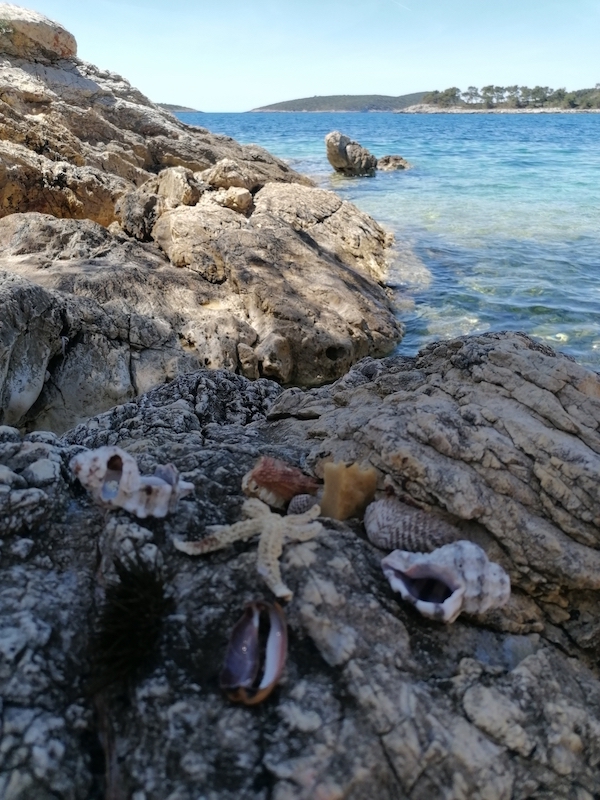
However, I still couldn't decide whether to go - to Brac or Solta - for Saturday sunbathing. At the last moment, I blurted out "Solta" at the checkout. "On the first ferry, please!" I totally forgot that the first ferry is at 6:40 am. "Nevermind, I'll go to sleep earlier today!" Then I recognised this ticket purchase was a fundamentally wrong decision. That Friday we celebrated Sveti Duje, the day of the saint patron of Split. There was no chance for me to escape the celebration and go to sleep earlier.
A suddenly emerged thought saved me from the desire to throw the ferry ticket into the sea from the pier where we celebrated Split City Day in the middle of an incredible post-covid standard crowd until 2:00 am. I thought that I could sleep on the beach of Maslinica on Solta. After 3.5 hours of sleep at home, I packed up and ran to the ferry.
5. Sometimes it is helpful to talk to a homeless man.
Solta is the closest island to Split. By ferry, one way takes only one hour. Once I'd settled on the ferry, I fell asleep. Thank you to the kind Croatian woman next to me who woke me up! At the port of Rogac I checked Google maps - 2 hours walk to Maslinica. 20 minutes later I reached one of the three 'towns' of Solta where you can find a supermarket.
Entering the supermarket I noticed a very colorful homeless man on the bench in front of it. He looked like Ali Baba. Red down jacket, harem pants, white apron, blue hoodie tied around the neck instead of a scarf. Fingerless gloves. A black beret holding a tuft of long gray hair and a gray beard. I had to restrain myself from taking a picture of him. I was not going to sponsor his vodka.
I had to restrain myself, but failed at the checkout. Too good a type! He was standing on the other side of the glass door while he noticed me taking a picture of him. He was waiting for me at the exit. "Take an initiative talking with locals. Don't be afraid!" I calmed myself. "Please, sir, may I take a picture of you?"

On the fifth attempt, the homeless man guessed that I was from Russia. Novorossiysk (Russian port) - Izmail (today's Ukraine) - Gori (Georgia). That's in general how his path in USSR looked like. His work had something to do with the sea as I understood. "I had a great company in the Crimea," he said. "I still remember those five Russian women surrounding me: Lyuba, Zoya, Nina..." It seems to be true, in those days the names were popular in the Soviet Union. The man was in Poland as well, in the Czech Republic. He worked in France for six months, then in the United States...
He remembered a few sentences in Russian. Here on the island, there were some Russian girls in Necujem. He taught them three main phrases in Croatian:
- Mi se svije Hrvatska. (I like Croatia).
- Ja ću se udati za Dalmatinca. (I will marry a Dalmatian man).
- Ja sam dobra pička. (I'm a good p***y).
Well, I can trace some logical connection here...
6. Have a list of souvenirs from Solta.
Homeless Ali Baba asked me how long would I stay in Croatia. He began to think about what souvenirs should I send to my family in Russia. Solta olive oil, Solta honey, Solta wine, Rogac bean for baking, lavender...
"I will collect it for the next time you come to Solta. I have oil, wine, a farm, 7 chickens, 2 houses... You can sleep in one of them, and I'll stay in the other. Is it okay? Take some lavender I picked this morning. Here you are. Do you know that there are two types of lavender? Do you want a chocolate bar?"
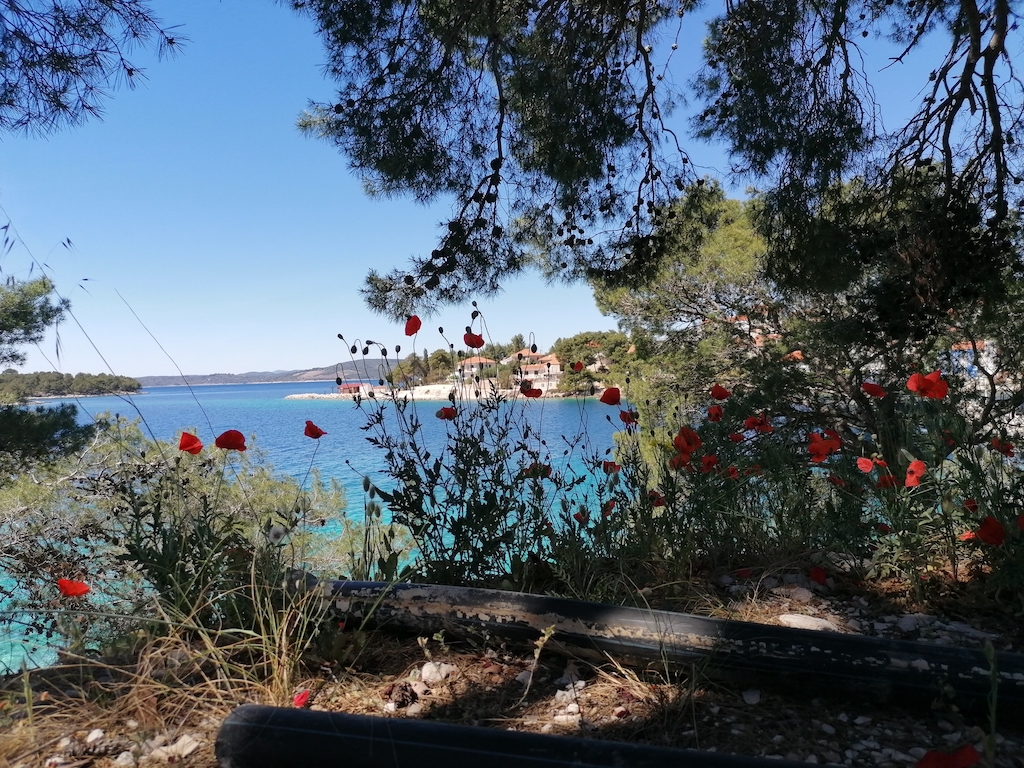
I jumped aside as Ali Baba touched me with lavender. Flowers do not excuse the whole stench. And the worst thing was his long nails. I was at a loss. Some parts of his story seemed plausible. However, I could not find any logical connection between his own farm and the homeless look. Two houses? I'm not going to believe in it.
The situation that we were standing in the center of the town nearby the only supermarket seemed even stranger. People passed us by us every five minutes. They greeted Ali, in response he defiantly showed me to everyone. "Look, such a beautiful Russian is talking to me!" Passersby looked at me with a grain of compassion, but they passed by further. Then one of the passers-by had heard that I was on my way to Maslinica and offered to give me a ride. He was going in the same direction. Thank you, Igore! I quickly got in the car.
Recap
1. Clothes do not make the man.
In the end, I got to Maslinica in 15 minutes by car, not in 2 hours by foot. On the way, Igor explained to me that Marin Kumin (that's the true name of 'Ali Baba') was not homeless. He does have things he mentioned. He's not a foolish man. Unfortunately, he went crazy in the sea about two years ago. Since then he has not been washing, shaving, cutting his hair. It looks scary from the outside. But he's not what he seems to be.

2. Take the initiative to talk to locals on the island.
I would probably consider the breakfast that Igor fed me after we came to Maslinica - coffee and toast with Solta honey - as a part of traditional Dalmatian hospitality. But the best lunch I've had in Dalmatia would never happen if I had left his place in a rush, without any conversation. I asked about a fishery on the island - I had lunch with Igor and his friends-fishermen. We ate the tuna they caught the day before. I had only known about tuna from canned food and Hemingway's story 'The Old Man and the Sea'. My concepts were turned upside down. Eventually, I found an island where there's more fish than meat.
3. Don't be afraid to go around the island alone.
Igor showed me the Maslinica neighborhood, Martinis-Marchi castle, and a way to a beach. Then I went alone to an empty rocky beach. I swam also alone, although there were some yachts around. No fear. I was a little worried that nobody will notice if I drown. But as I got out the beach marine officers asked me about the temperature of the water and how I felt.
4. If something goes wrong, you can always sleep on the beach.
It was my first swimming this year. The water at the beginning of May was still cold. I swam for five minutes. Never mind, then I slept on the beach. And then I swam two more times.
5. Sometimes it is helpful to talk to a homeless man.
I mean a keen conversation, lavender and the fresh tuna I had!
6. Have a list of souvenirs from Solta.
Try to do it in advance, because when you come outside the tourist season, it's complicated to get the souvenirs immediately. I didn't succeed to take a bottle of Solta olive oil on the same day, so I had to go back again.
For more on travel in Croatia, follow TCN's dedicated page.
PM Says COVID Travel Pass Important for Croatia as a Tourist Destination
ZAGREB, 21 May 2021 - Agreement on introducing an EU-wide COVID travel pass was welcomed by Croatian Prime Minister Andrej Plenković on Friday, who said that Croatia strongly pushed for the agreement on this document designed to facilitate free movement for work and tourism across the bloc.
The European Parliament confirmed on Thursday that a deal had been reached between the EP, Portugal which is the current chair of the Council of the EU and the European Commission on EU Digital COVID certificate the travel pass with the EU's 27 member states.
The certificate will include information about vaccination, tests, and recovery from the disease. EU citizens will be able to obtain the pass if they have, at least, one of the three elements.
The official name of the travel pass will be "EU Digital COVID certificate" and it will have a physical and digital version and will work through a QR code.
Applying those certificates is very important for Croatia, notably for its tourist trade, Plenković said today in Osijek.
The regulation about certificates is set to take effect in early July.
Plenković said that the COVID-19 epidemic was slowly ebbing away in Croatia.
He said that Croatia was ready to handle the technical processing of the data concerning the recovery, vaccination, and negative tests.
Those with one vaccine dose will be able to apply for the pass. But only vaccines approved by the European Medicines Agency (EMA) will be accepted. As of today, the vaccines green-lighted by the European Medicines Agency are Pfizer-BioNTech, Moderna, AstraZeneca, and Janssen (Johnson & Johnson).
For all you need to know about coronavirus specific to Croatia, including travel, border and quarantine rules, as well as the locations of testing centres and vaccination points up and down the country, make sure to bookmark our dedicated COVID-19 section and select your preferred language.
72nd Dubrovnik Summer Festival to Feature over 60 Events
ZAGREB, 16 May, 2021 - The 72nd edition of the Dubrovnik Summer Festival will be held from 10 July to 25 August, with over 60 plays, concerts, dance and folklore performances taking place at about 10 venues, the organisers announced earlier this week.
The budget of the 72nd Dubrovnik Summer Festival is nearly HRK 8 million, which is HRK 1.5 million more than in 2020. The festival's own funds, including revenues from sponsors, donors and tickets, account for 30% of the budget.
It is expected that online ticket sales will start after new epidemiological guidelines for events are released.
For more information about events in Croatia, follow TCN's dedicated page.
Croatia Becomes a Destination for Vegan Sailing Vacations
May 13, 2021 - This season, the Croatian coast has something to offer - vegan sailing vacations. Alvus Sailing has launched a new sailing tour with vegan dishes on board!
Although there are a handful of restaurants and shops with vegan options in big cities, on the Dalmatian Coast, Croatia has not been considered a travel destination for vegan vacations. That is, until now!
Matea and Marina from Alvus Sailing created a Vegan Sailing Vacation - a 7-day sailing tour from Split with vegan cuisine on board.
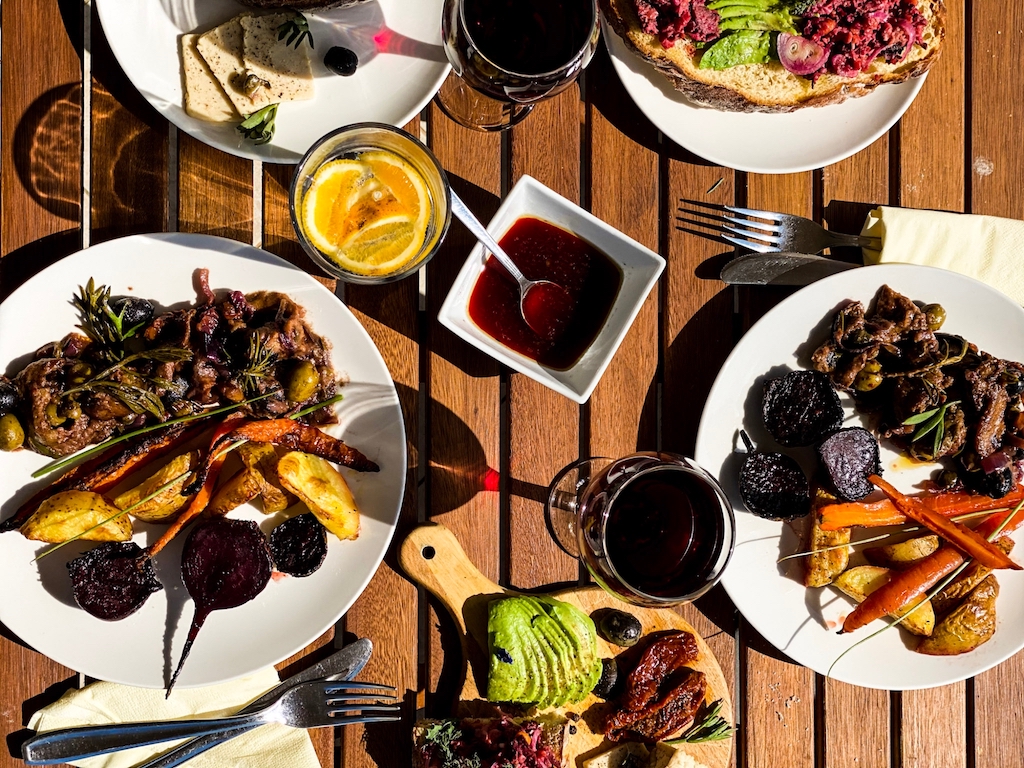
"The combination came as a natural consequence of our passions," Matea explains. She finished a sailing major in Zagreb and worked as a skipper in the summer, while Marina practiced plant-based cuisine. Partners at work and in life, they proposed the idea to their friend from a travel agency and the new tour was born.
It keeps up with trends in the sphere of caring about the meals of the guests during longer sailing trips. Here in Split, we already have companies that are trying to offer clients more than prosciutto & cheese - that actually doesn't fit for vegans. Enthusiastic sailors cook a dinner for the guests by themselves. "Since it is very cozy to have someone cook for you on the boat, I thought that could be a very good offer for tourists in general," Matea adds.

Besides, vegan cuisine for the tour is already thought out and tested many times by Marina. She is inspired mainly by Mediterranean cuisine which originally contains a lot of vegan dishes but also mixes it with Asian tastes. She uses different combinations and cooking methods to get different tastes and provides the guest on board 3 vegan meals with snacks per day. It seems especially valuable for regular vegans who, aside from top vegan vacation places, mostly in the US and Canada, still have this fear of eating only peanut butter and jelly on the whole trip. Split's offer of food witnessed positive changes over the last decade. Comparing blogs of vegans traveling in Croatia, we can see them reporting about 1 place per day for vegan meals in the city 12 years ago and, respectively, about 2-3 vegan places per day in 2020. However, even now it's recommended to have your vegan snacks with you while traveling, because it's not easy to find everywhere in Croatia.

Vegan Sailing Vacations welcome not only a vegan audience. For non-vegan people, this tour could be even more of an astonishing surprise, its creators suggest. Marina is willing to show the process of cooking vegan food and share recipes with anybody interested. As well, the guests will be able to participate in collecting edible wild plants on islands and implementing them in meals.
Meals on Marina's table look very delicious. But as a non-vegan person, I always wonder whether you will be strong enough for sailing stuff if you eat only plant-based dishes. The adventurous girls prove by their own experience that it's possible to strong as a vegan. Matea is working also as a fitness trainer.
"I can just say, I had a boxing session on Palagruža".
For more on travel in Croatia, follow TCN's dedicated page.


